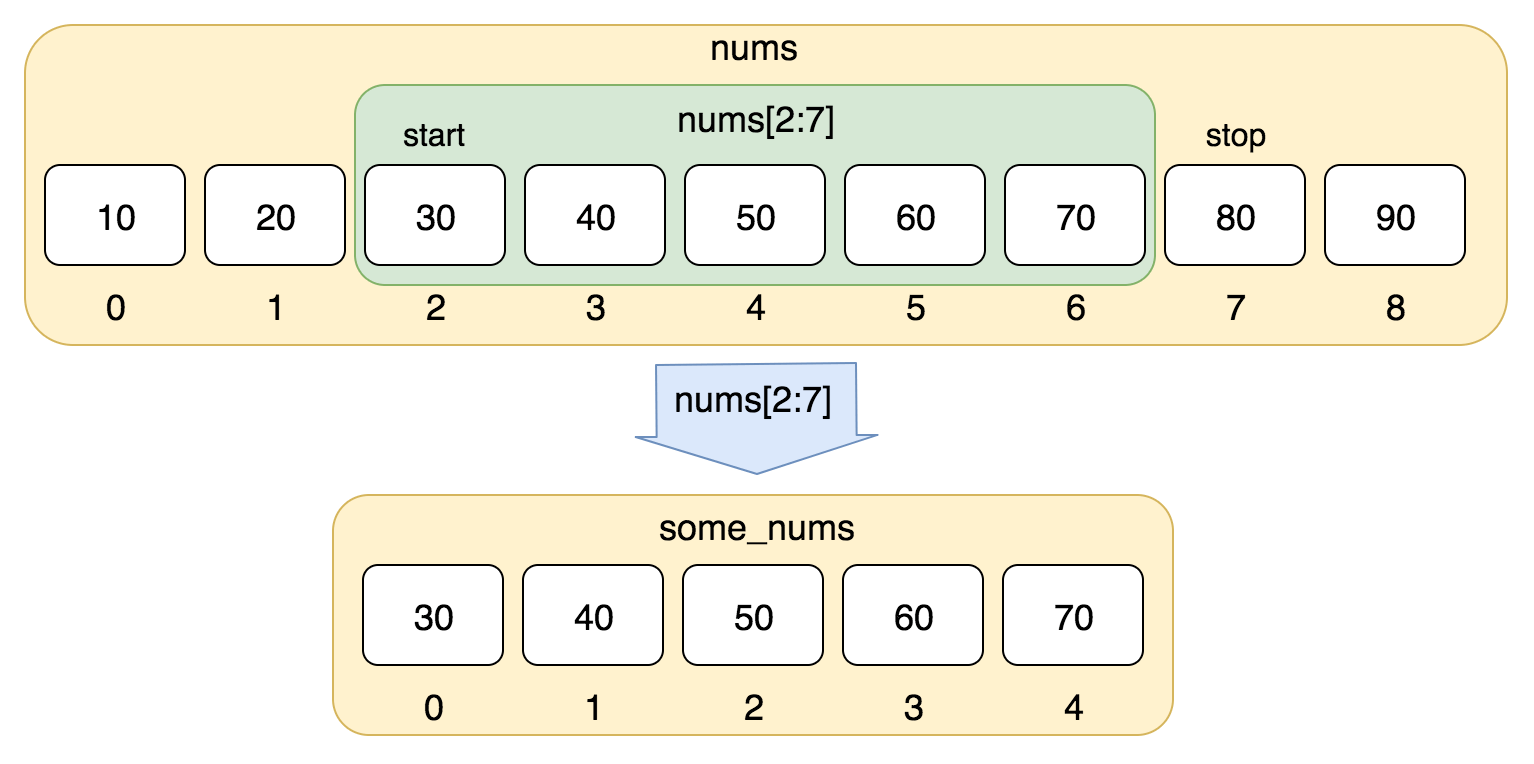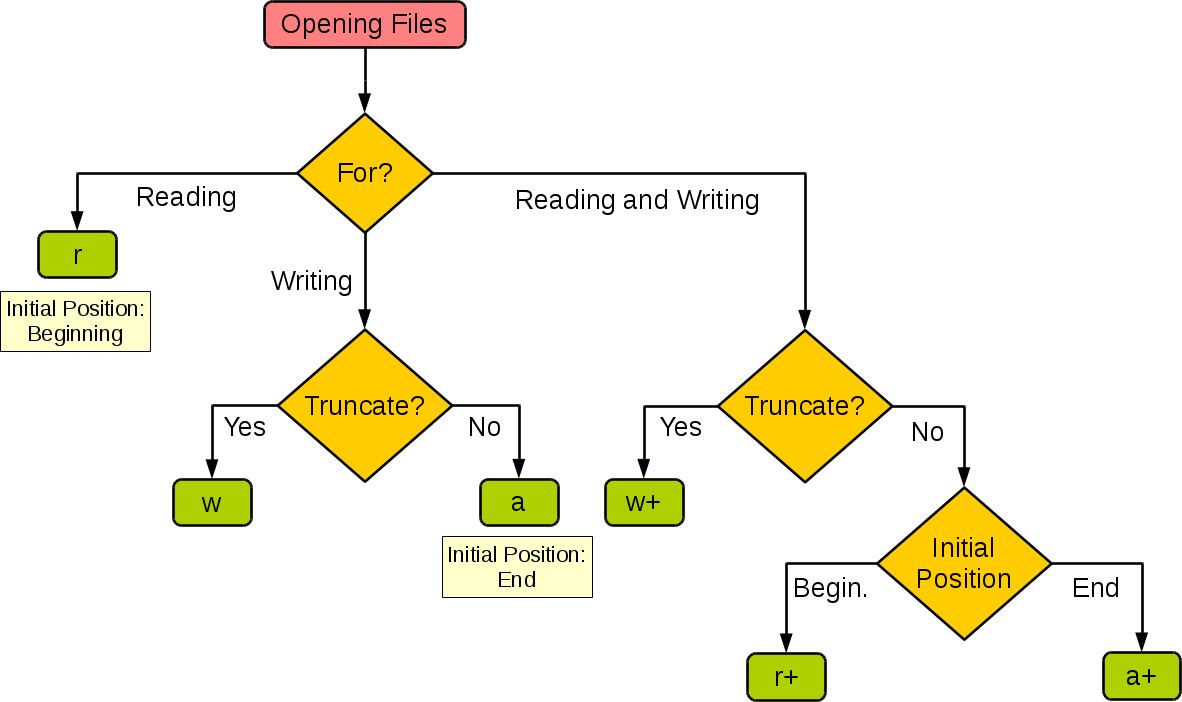Sequence in Python
A sequence is one of the most basic data structures in Python.
Each value in a sequence is assigned a position called an index. The first index is 0, the second index is 1, and so on.
Python has six built-in types of sequences, but the most common ones are lists and tuples.
Operations that can be performed on lists include indexing, slicing, adding, multiplying, and checking membership.
Additionally, Python provides built-in methods for determining the length of a sequence, as well as the largest and smallest elements.
Lists are the most widely used data type in Python. They are collections of comma-separated values enclosed within square brackets.
The data items in a list do not need to be of the same type.
To create a list, simply place a comma-separated set of data items inside square brackets, as shown below:
list1 = ['Google', 'Runoob', 1997, 2000] list2 = [1, 2, 3, 4, 5] list3 = ["a", "b", "c", "d"] list4 = ['red', 'green', 'blue', 'yellow', 'white', 'black']
Accessing Values in a List
Just like string indexing, list indices start at 0, the second index is 1, and so on.
You can access, slice, and combine list elements through their indices.

Example
#!/usr/bin/python3 list = ['red', 'green', 'blue', 'yellow', 'white', 'black'] print(list[0]) print(list[1]) print(list[2])
The output of this code is:
red green blue
Negative Indexing
Indices can also be negative. The last element has an index of -1, the second-to-last element has an index of -2, and so forth.

Example
#!/usr/bin/python3 list = ['red', 'green', 'blue', 'yellow', 'white', 'black'] print(list[-1]) print(list[-2]) print(list[-3])
The output of this code is:
black white yellow
Slicing Lists
In addition to accessing values via indices, you can also slice lists using square brackets.

Example
#!/usr/bin/python3 nums = [10, 20, 30, 40, 50, 60, 70, 80, 90] print(nums[0:4])
The output of this code is:
[10, 20, 30, 40]
Slicing with Negative Indices
You can also use negative indices for slicing:
Example
#!/usr/bin/python3
list = ['Google', 'Runoob', "Zhihu", "Taobao", "Wiki"]
# Accessing the second element
print("list[1]:", list[1])
# Slicing from the second element (inclusive) to the second-to-last element (exclusive)
print("list[1:-2]:", list[1:-2])The output of this code is:
list[1]: Runoob list[1:-2]: ['Runoob', 'Zhihu']
Updating a List
You can modify or update the items in a list. You can also use the append() method to add new items to the list, as shown below:
Example (Python 3.0+)
#!/usr/bin/python3
list = ['Google', 'Runoob', 1997, 2000]
print("The third element is: ", list[2])
list[2] = 2001
print("Updated third element is: ", list[2])
list1 = ['Google', 'Runoob', 'Taobao']
list1.append('Baidu')
print("Updated list: ", list1)Output of the code:
The third element is: 1997 Updated third element is: 2001 Updated list: ['Google', 'Runoob', 'Taobao', 'Baidu']
Note: We will discuss the usage of the
append()method in the upcoming sections.
Deleting List Elements
You can use the del statement to delete elements from a list, as shown in the following example:
Example (Python 3.0+)
#!/usr/bin/python3
list = ['Google', 'Runoob', 1997, 2000]
print("Original list: ", list)
del list[2]
print("After deleting the third element: ", list)Output of the code:
Original list: ['Google', 'Runoob', 1997, 2000] After deleting the third element: ['Google', 'Runoob', 2000]
Note: We will discuss the usage of the
remove()method in the upcoming sections.
Python List Operators
The + and * operators work similarly for lists as they do for strings. The + operator concatenates lists, while the * operator repeats the list.
Here are some examples:
| Python Expression | Result | Description |
|---|---|---|
len([1, 2, 3]) | 3 | Length of the list |
[1, 2, 3] + [4, 5, 6] | [1, 2, 3, 4, 5, 6] | Concatenation of lists |
['Hi!'] * 4 | ['Hi!', 'Hi!', 'Hi!', 'Hi!'] | Repetition of list elements |
3 in [1, 2, 3] | True | Check if an element is in the list |
for x in [1, 2, 3]: print(x, end=" ") | 1 2 3 | Iterating through a list |
Python List Slicing and Concatenation
Slicing lists in Python is similar to slicing strings, as shown below:
L = ['Google', 'Runoob', 'Taobao']
| Python Expression | Result | Description |
|---|---|---|
L[2] | 'Taobao' | Access the third element |
L[-2] | 'Runoob' | Access the second-to-last element |
L[1:] | ['Runoob', 'Taobao'] | Access all elements starting from the second element |
Example:
>>> L = ['Google', 'Runoob', 'Taobao'] >>> L[2] 'Taobao' >>> L[-2] 'Runoob' >>> L[1:] ['Runoob', 'Taobao']
You can also concatenate lists:
>>> squares = [1, 4, 9, 16, 25] >>> squares += [36, 49, 64, 81, 100] >>> squares [1, 4, 9, 16, 25, 36, 49, 64, 81, 100]
Nested Lists
A nested list refers to creating other lists within a list. For example:
>>> a = ['a', 'b', 'c'] >>> n = [1, 2, 3] >>> x = [a, n] >>> x [['a', 'b', 'c'], [1, 2, 3]] >>> x[0] ['a', 'b', 'c'] >>> x[0][1] 'b'
List Comparison
To compare lists, you need to introduce the eq method from the operator module (for more details, see the Python operator module):
Example
# Import the operator module
import operator
a = [1, 2]
b = [2, 3]
c = [2, 3]
print("operator.eq(a,b): ", operator.eq(a, b))
print("operator.eq(c,b): ", operator.eq(c, b))Output of the code:
operator.eq(a,b): False operator.eq(c,b): True
Python List Functions and Methods
Python includes the following functions:
| No. | Function | Description |
|---|---|---|
| 1 | len(list) | Returns the number of elements in the list |
| 2 | max(list) | Returns the maximum value in the list |
| 3 | min(list) | Returns the minimum value in the list |
| 4 | list(seq) | Converts a tuple to a list |
Python also includes the following methods:
| No. | Method | Description |
|---|---|---|
| 1 | list.append(obj) | Adds a new object to the end of the list |
| 2 | list.count(obj) | Counts the occurrences of an element in the list |
| 3 | list.extend(seq) | Appends multiple values from another sequence to the end of the list |
| 4 | list.index(obj) | Finds the index of the first matching element |
| 5 | list.insert(index, obj) | Inserts an object into the list at a specified position |
| 6 | list.pop([index=-1]) | Removes and returns an element from the list (defaults to the last element) |
| 7 | list.remove(obj) | Removes the first matching element from the list |
| 8 | list.reverse() | Reverses the order of elements in the list |
| 9 | list.sort(key=None, reverse=False) | Sorts the list in place |
| 10 | list.clear() | Clears all elements from the list |
| 11 | list.copy() | Returns a shallow copy of the list |


